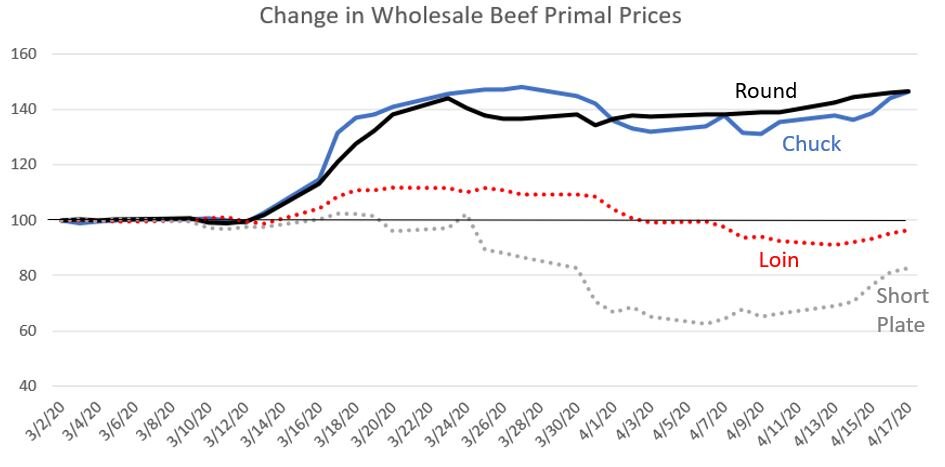With numerous stories emerging about the the bottlenecks associated with the closure of meat packing plants, my sense is that many consumers and journalists have a hard time grasping the nature and scale of the problem. Here’s a little primer.
Poultry, hog, and to a somewhat lesser extent, cattle, production operates on a just-in-time basis. From the day a sow (a mama pig) becomes pregnant, a chain of events is set in motion that will result in a pig being sent to the packing plant in approximately 300 days. The well-orchestrated supply chain involves the coordination of many players operating in a timely manner. Once piglets are born, they move to a farrowing house for 3 weeks. Then, they are moved to another barn or farm in a nursery for 7 weeks. After that, hogs are moved again to growing or finishing barn for about 16 weeks. Check out this useful graphic from the National Pork Board.
If the finished pigs, who weigh about 280lbs, are unable to head to the packing plant, there is no room in the barn to receive the new batch of pigs from the nursery. If the nursery isn’t vacated, there is no room for the piglets. All the while, new piglets are being born with nowhere to go. Thus, the closure of packing plants leaves farmers with no good options.
It is possible to hold onto the finished pigs for a bit longer and change diets or barn temperature to slow down growth, but this is costly and doesn’t stop the flow of new pigs into the system. Producers could put more hogs in the barn, but this could create animal welfare problems and expose animals to disease. This is also a reason hogs aren’t moved outside (such a move would expose animals to weather, diseases, and parasites), in addition to the fact that most hog producers do not have the pens and equipment to comfortably house hundreds of hogs in this way. Keep in mind, there are 77.6 million pigs in this country. Iowa alone has 23.6 million pigs, or about 7.6 pigs for every man, woman, and child in that state.
Here is where the scale of the problem really kicks in. We have a national pork processing capacity of about 500,000 head per day. Latest data suggests that because of plant closures and slowdowns, we are processing about 40% fewer pigs, which means an extra 500,000*0.4 = 200,000 pigs that are left on the farm. Every. Single. Day. Do that for 5 days, and that’s 1 million “excess” pigs left on the farm.
Why not send the the hogs to smaller local packers? Well, assuming those packers even had room, how big are they? Some of the small-ish packers of any scale process 200 hogs a day. But, the largest plants now shut down can process 20,000 hogs a day. That means, 1 of those small plants would have to run 20,000/200 = 100 extra days to make up for just 1 day of lost production from the large plant. Or, stated differently, we’d need 100 brand new small packing plants to make up for the loss of one large plant.







